After a disappointing 2022 FIFA World Cup, which saw Belgium exit at the group stages, Roberto Martínez resigned from the head coach position after six years in charge.
The Spaniard was not able to win any major tournament with Belgium’s so-called “golden generation”, with many feeling Belgium should have been capable of winning at least one tournament.
The Belgian FA hired Domenico Tedesco as his replacement, with the former Schalke & RB Leipzig boss not losing a single match yet since being appointed at the beginning of February 2023.
Leading Belgium to glory in the country where he grew up will not be easy though, with their group consisting of Slovakia, Romania, and Ukraine, three countries who are very capable of causing an upset.
Predicted starting XI
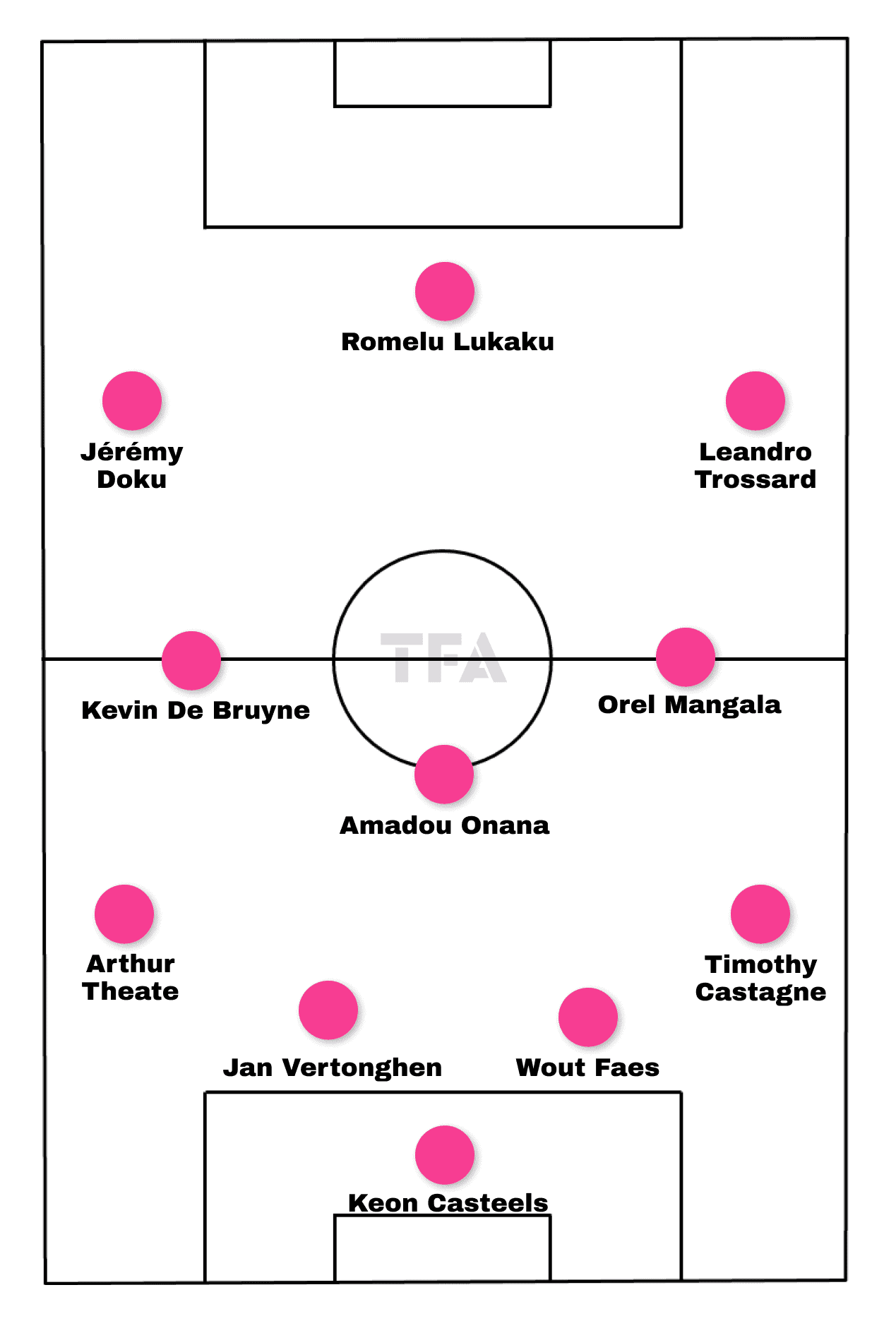
Tedesco has altered Belgium’s starting formation throughout the course of their qualifying campaign and international friendly matches.
The 38-year old has tended to stick with a back four, but the shape could look like a 4-3-3, 4-2-3-1, 4-1-4-1, or even a traditional 4-4-2.
However, for the sake of this prediction, we feel that Tedesco will opt for a 4-3-3, with the shape tending to alter throughout the course of a match anyway.
While Tedesco has played with both Keon Casteels and Mats Sels in goal for recent matches, the starting spot seems likely to go to the former, with the 31-year-old Wolfsburg goalkeeper looking set to take Thibaut Courtois’s place after Tedesco confirmed the Real Madrid goalkeeper will not be picked for this tournament after missing most of the season due to two separate knee injuries.
Moving up into the defence, Tedesco again has plenty of options he could go with at both the full-back and centre-back positions.
Starting with the left-back, it seems likely that Arthur Theate could get the nod here.
The 23-year-old Rennes defender is normally a centre-back but has tended to start at left-back for Tedesco.
Belgium recently opting to switch to a back three shape when they are in possession, with Theate sliding inside to become this third centre-back.
Olivier Deman could also be an option for Tedesco at left-back, with the Werder Bremen wingback being a more attack-minded option and starting some recent matches for the Red Devils.
Moving centrally, and Tedesco will likely start with veteran Jan Vertonghen next to Leicester City centre-back Wout Faes.
Genoa defender Koni De Winter and Anderlecht centre-back Zeno Debast will likely offer good depth for Tedesco in case of any potential injuries.
At right-back, Tedesco will likely choose between Fulham defender Timothy Castagne or Thomas Meunier, with the 38-year-old giving the nod to Castagne in recent matches.
Moving up into the midfield, this is arguably the strongest area of the squad, with Tedesco able to mix and match between many different players in what will likely be a midfield three.
National team captain and Manchester City star Kevin De Bruyne is a nailed-down starter, with Everton midfielder Amadou Onana preferred in a deeper-lying midfield role.
The third midfielder role is where there may be some debate, with Tedesco having the option of Orel Mangala, Youri Tielemans, and Aster Vranckx.
The nod in this prediction goes to the Napoli man.
Still, it would be unsurprising if Tedesco goes a different route, with Tielemans scoring both goals against England and Vranckx having a much bigger role in the national team setup since Tedesco’s appointment.
In what will likely be a front three from Tedesco, Leandro Trossard and Jérémy Doku should be preferred on the wings, with Trossard in fine form for Arsenal this season and Doku having an impactful role with Manchester City.
Charles de Ketelaere and PSV’s Johan Bakayoko could also push for starting spots, with the latter making a real case for his inclusion from the start this summer.
The central striker position is where there could also offer some potential debate.
Romelu Lukaku looks set to keep his place in the starting XI, but RB Leipzig’s Loïs Openda has been in tremendous form for the German side, giving Tedesco a potential headache before their first match of the group stages.
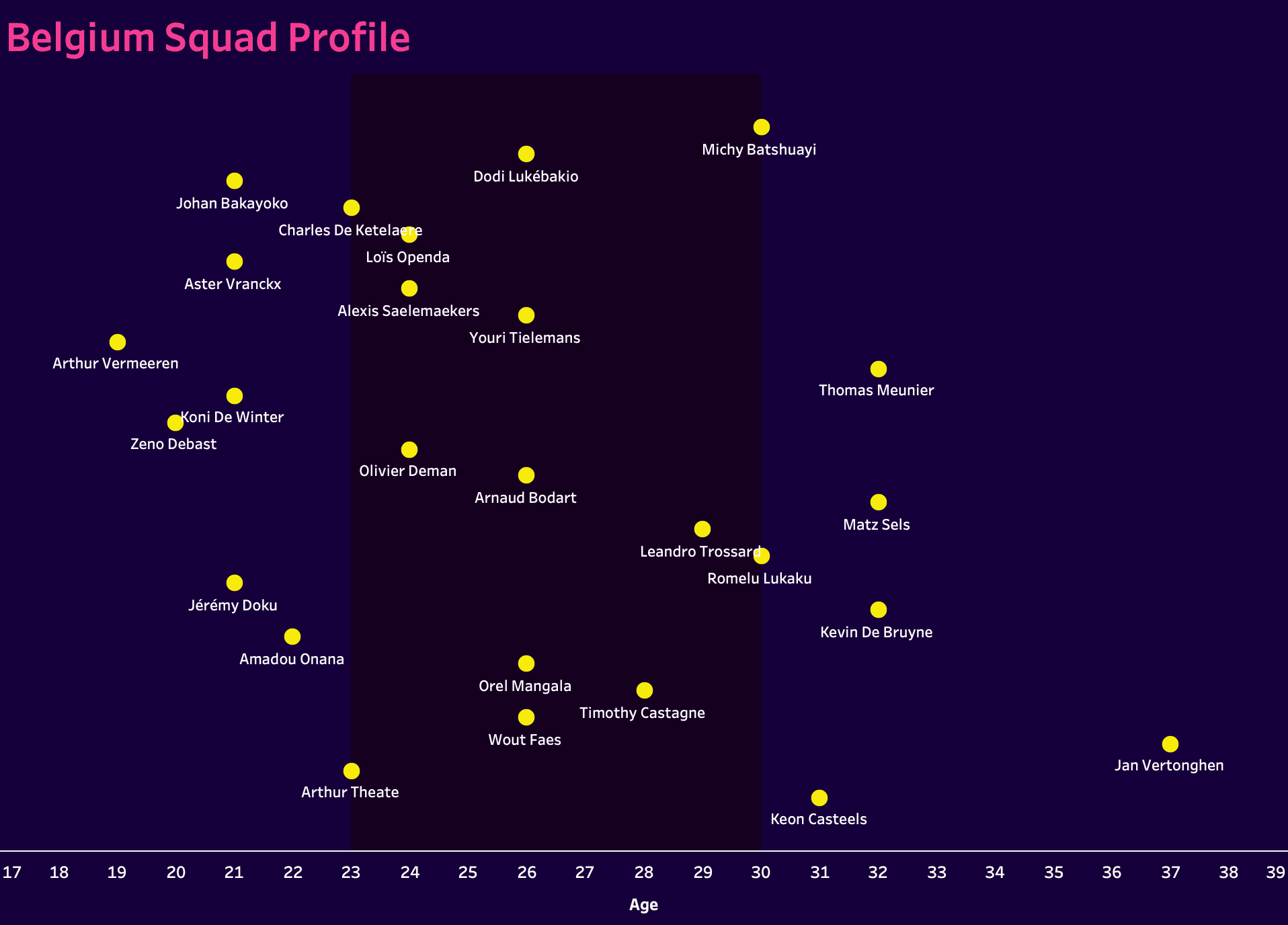
As we can see from the squad age profile above, there has been plenty of turnover in the Belgian squad since Tedesco’s appointment.
Many of the old heads from the previous international tournament retired after the last World Cup, with Vertonghen and De Bruyne being two of the last from their golden generation.
Instead, a new golden generation could potentially be beginning to show up on the international stage, with the majority of Tedesco’s predicted squad under the age of 26.
Attacking phase
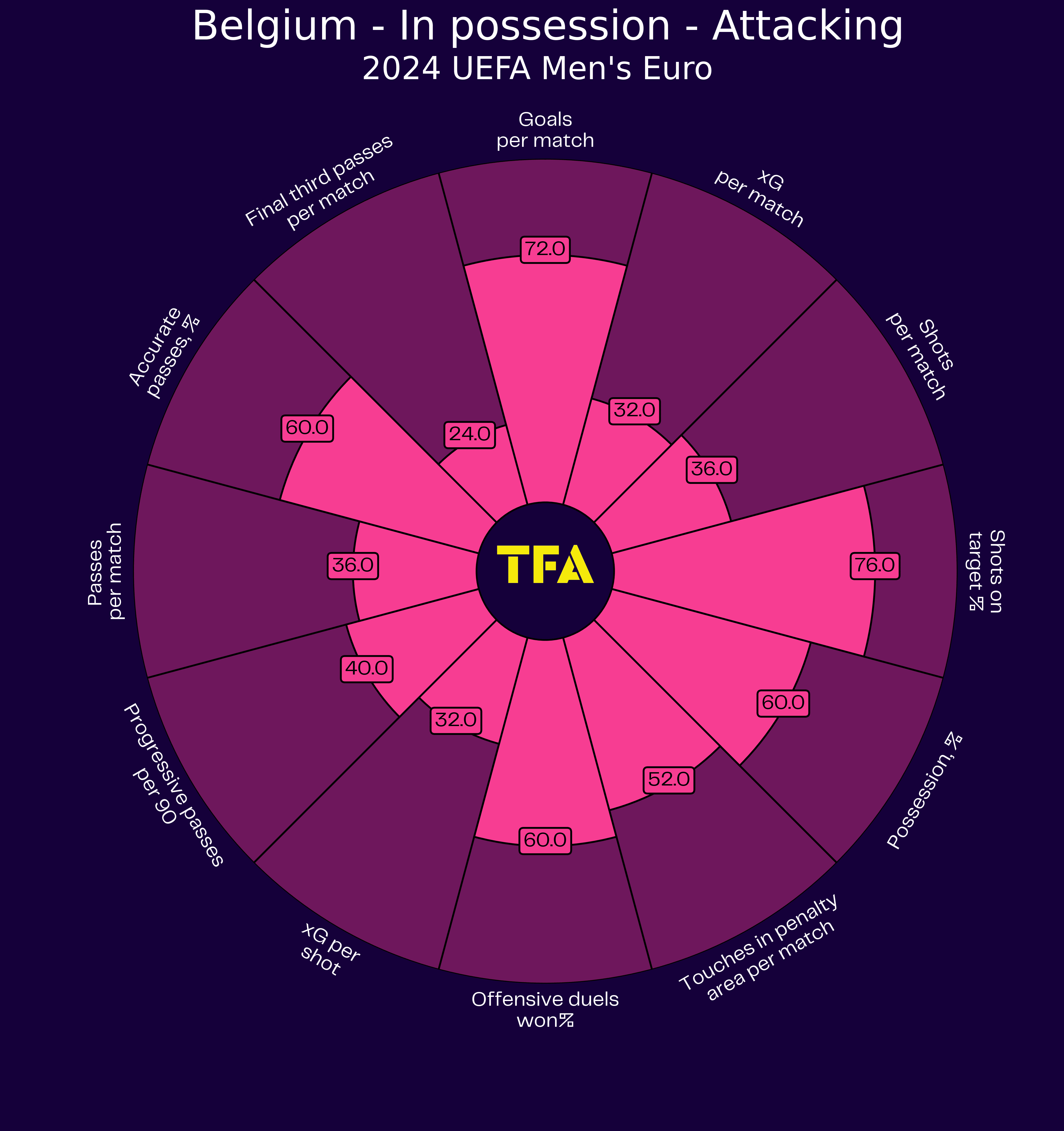
Since Tedesco was appointed, Belgium’s style of play when they attack has been altered from what it was under Martïnez.
Under the Spaniard, Belgium were a much more possession-oriented side, with Tedesco opting for a more direct attacking style of play.
This is not to say Belgium will not look to control possession in matches, but they have tended to look to play long towards the front line quicker.
Their 60th percentile ranking in possession is able to still highlight their tendency to possess.
However, their passes per match only ranks in the 36th percentile, below the average against other national teams in this tournament.
They rank above the 70th percentile in both percentage of shots on target and goals per match, which highlights how clinical they have been in front of goal under Tedesco.
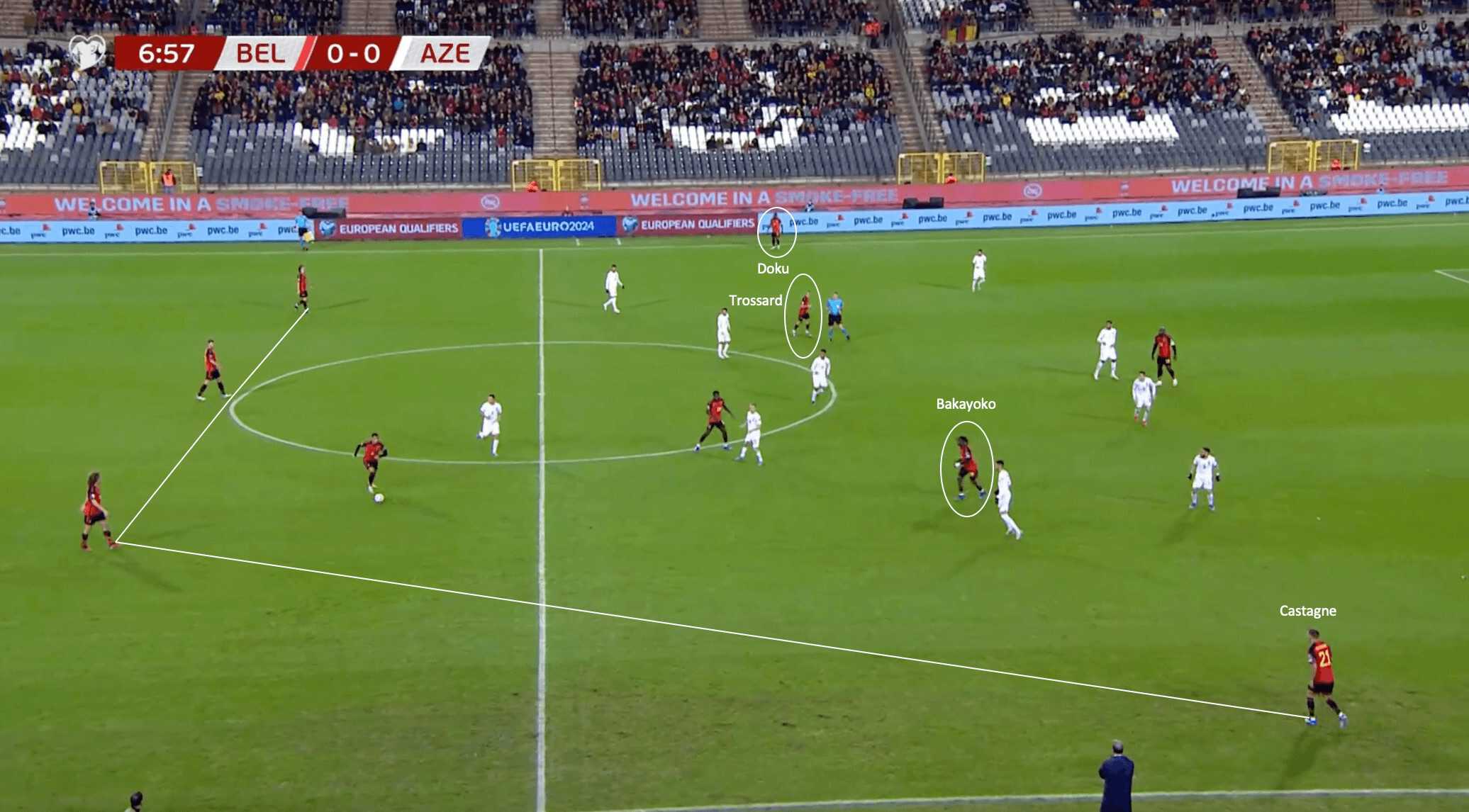
We already discussed how the in-possession shape of Belgium tends to look different and shift over the course of a match.
The image above from their Euro qualifying match against Azerbaijan shows what it has tended to look like.
When Belgium are in possession, Tedesco wants to push numbers forward into the attacking half to help facilitate build-ups and allow his defenders time on the ball.
Tedesco wants his wingers to invert into the half spaces when in possession, with at least one of the full-backs pushing forward to occupy the wide channel.
In this example, Castagne pushes high and wide, with Bakayoko inverting into the half-space, which allows him to drop deeper into midfield and present as a passing option.
On the far side, Theate has inverted to become a third centre-back, while Trossard has inverted, and Doku has held the width and become almost a defacto wing back.
These movements also allowed Belgium to overload the weak side of the pitch, opening up the potential for a long diagonal to quickly switch the point of attack and allowing Tedesco’s side to attack with pace.
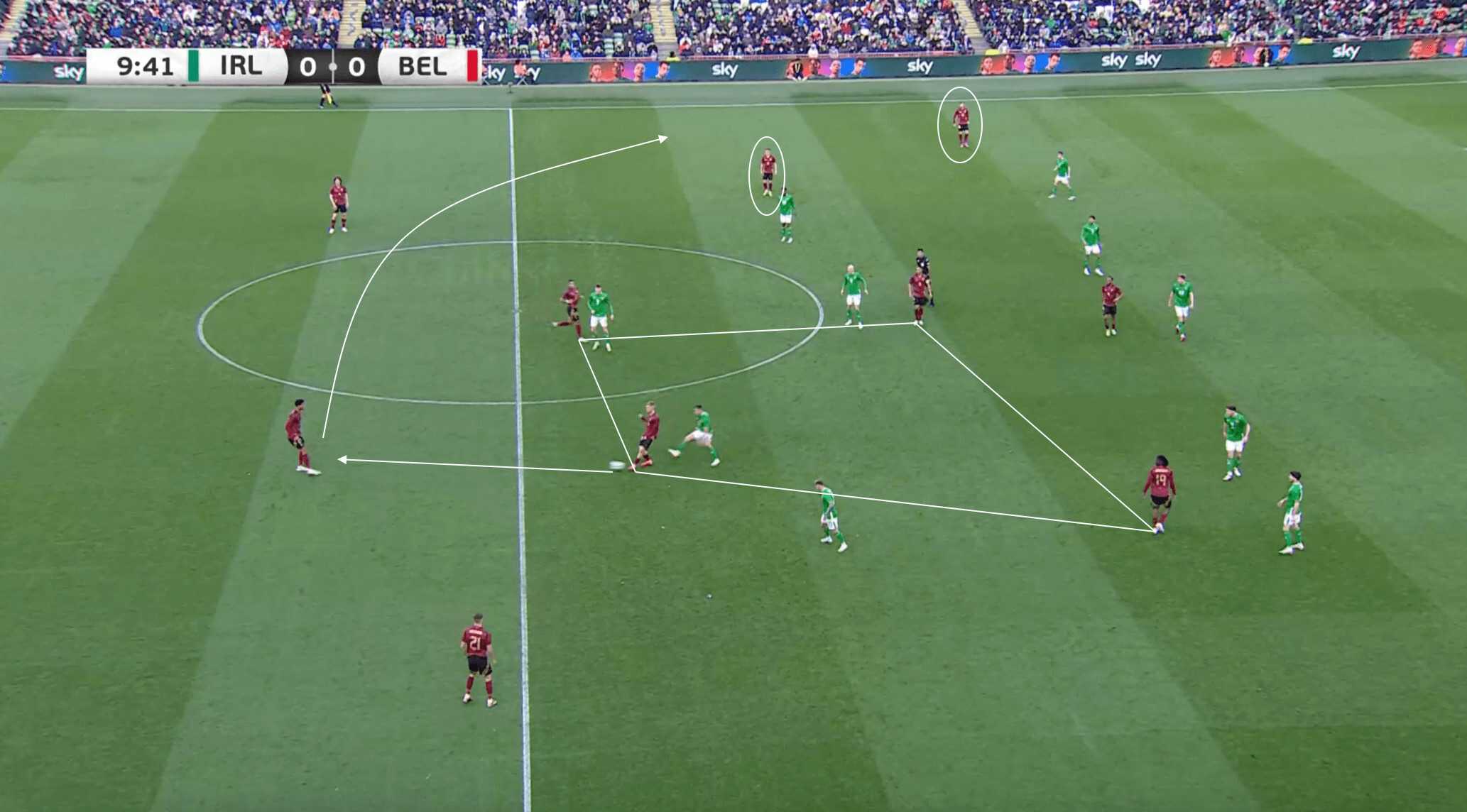
This attacking phase above from Belgium’s recent friendly against the Republic of Ireland shows Tedesco’s tactics in more detail.
In this attacking phase, Castagne has instead tucked inside to become the third central defender, with Olivier Deman allowed the freedom to push high and wide.
Trossard inverts into the half-space on the weak side, with Bakyoko’s movement to invert inside on the right creating a box in the midfield, with Belgium looking to overload this central area, which forces the opposition’s defensive shape to become more compact to try and offset Belgium’s ability to play through the middle.
This is what Tedesco wants to happen, as it opens up the wide channels for the ball to be progressed into.
As the ball is played back to centre-back Koni De Winter, he is allowed to switch the play out wide to Trossard.
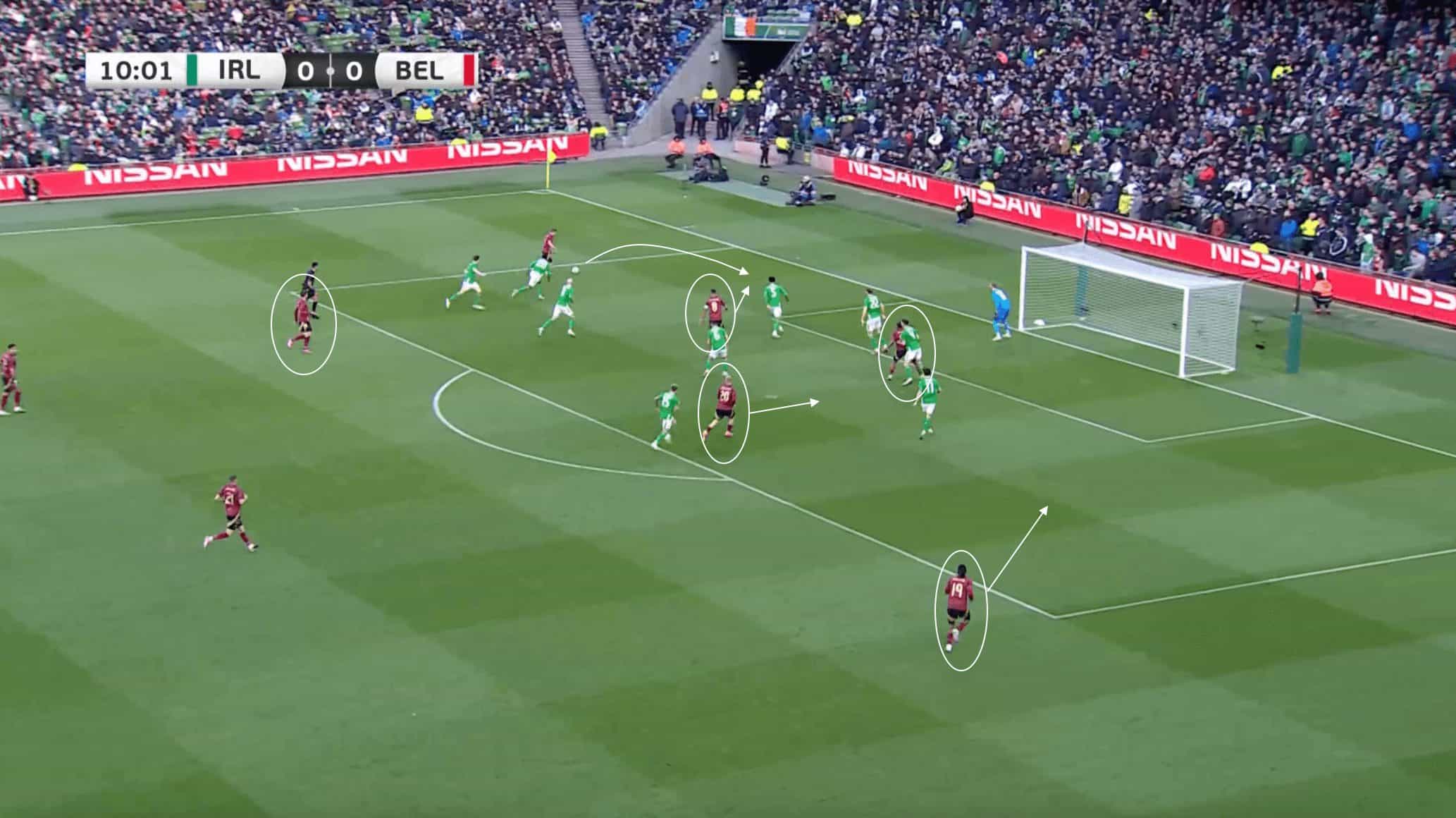
The resulting chance is shown in the image above.
After Trossard is allowed to drive into the penalty area from the wide channel, the rest of the advanced Belgian attack crashes the penalty box.
They all make different runs and have layers to their movements, something Tedesco wants his side to excel at given their main route of chance creation comes from long balls into the wide channels, or towards the striker where the midfielders can then position themselves to win second balls.
Here, Tielemans makes a near post run, Openda is able to occupy the centre-backs at the edge of the 6-yard box, Arthur Vermeeren makes a slot run, Bakayoko moves towards the back post, and Deman positions himself on the edge of the penalty area to potentially contest any second balls that come out towards him.
In this example, Tielemans gets his head on the cross, but his guided effort towards goal goes just wide.
From an attacking perspective, watch for plenty of movement off the ball and rotations, as well as inverting wide players into the half spaces from Tedesco’s side during the course of this European Championships.
Defensive phase
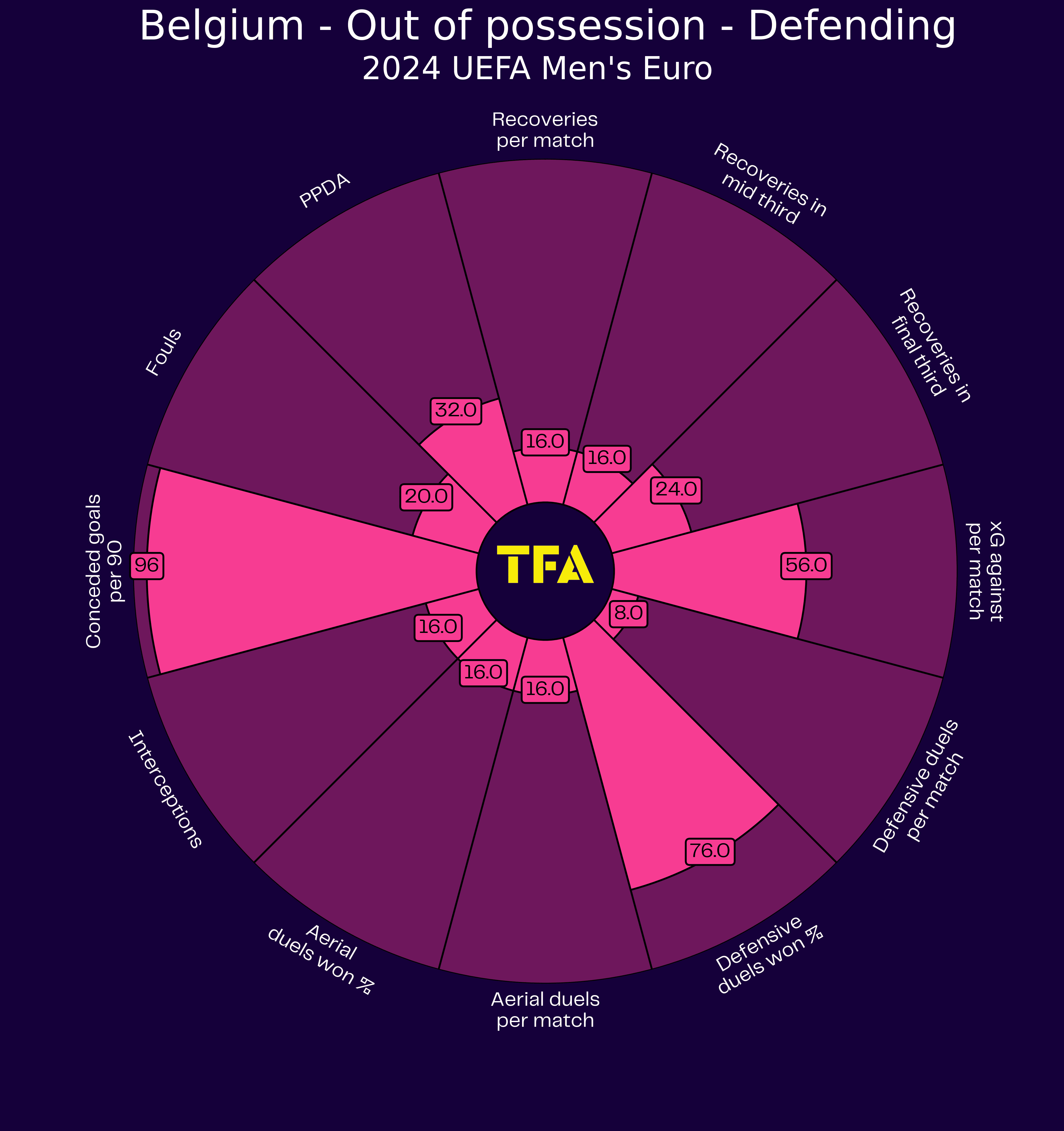
Above, we can see the pie chart of how Belgium compares to other national teams from a defensive perspective.
The first thing that pops right out for everyone to see is that Belgium rank in the 96th percentile for conceded goals per 90 minutes, highlighting the defensive solidity they have formed under Tedesco, while their xG against per match in the 56th percentile also ranking in the upper half.
They also rank in the 76th percentile for percentage of defensive duels won, showing Tedesco’s side are not afraid to step into challenges and be aggressive at winning possession back.
However, they do not attempt or win many aerial duels per match defensively, nor do they make many recoveries per match.
While they will press opposition sides at times, Belgium have tended to sit back in a solid defensive shape instead, looking to sit off at times in more of a mid-block shape.
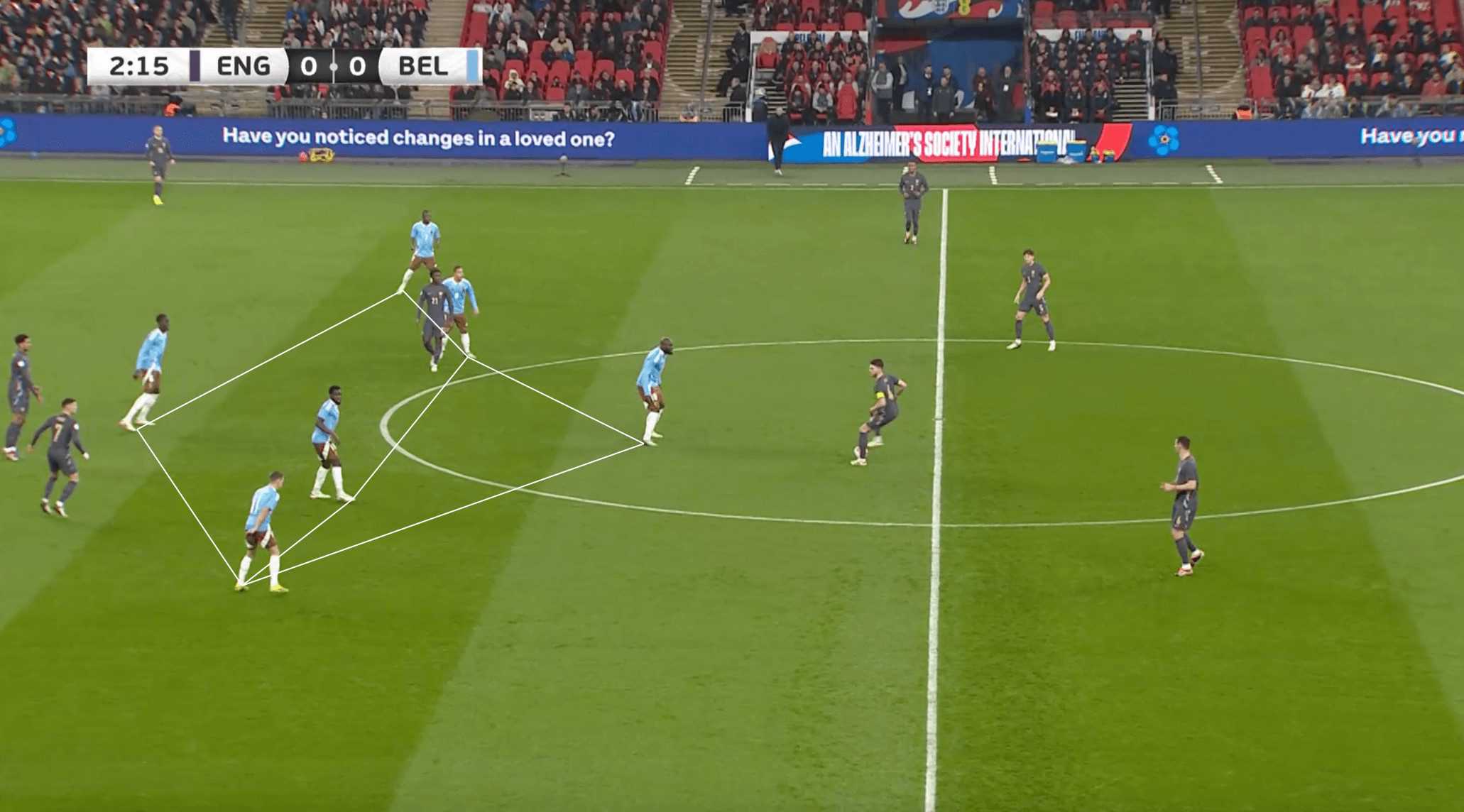
When it comes to Belgium’s typical defensive shape under Tedesco, it tends to look like either a 4-1-4-1 or a 4-4-2.
As we can see from their recent friendly match against England, they opted to go with the former.
Under Tedesco, Belgium have opted for a more solid defensive foundation, looking to stay compact and defend in more of a mid or low-block shape.
We can see how the front six of Belgium are very compact, forcing England to play side-to-side.
This compact shape from Belgium prevents opposition sides from progressing the ball vertically in the central areas.
In this case, England are forced to play the ball out wide to the right, before the ball is then recycled back to the centre-back, allowing the Belgian defensive shape to step up.
The Belgian full-backs will step out of the back four to engage the opposition wide players, but they will let the full-backs have possession in the wide channels.
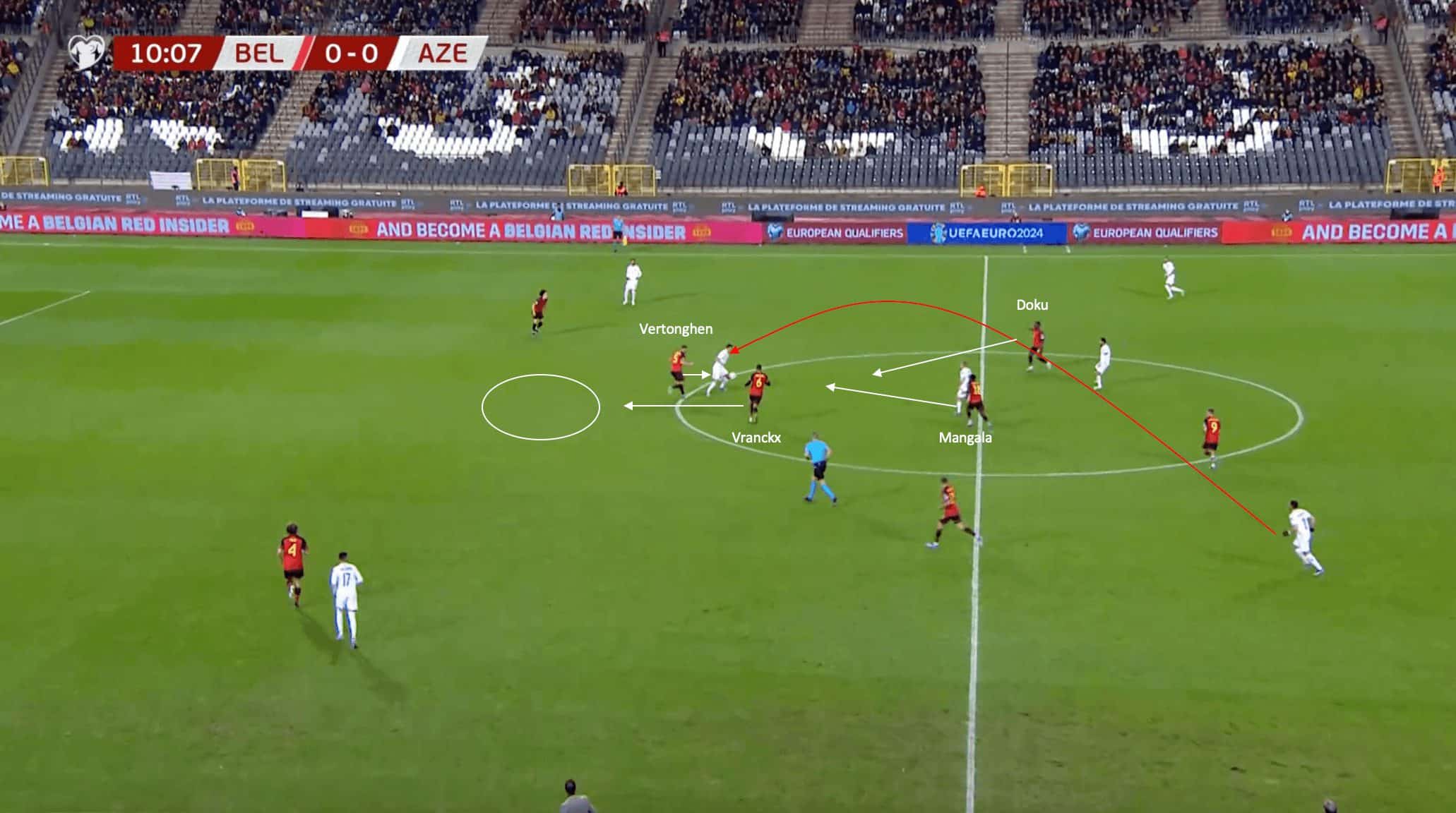
Another thing to note about how Belgium play defensively is the out of possession work rate they have displayed under Tedesco.
While the defensive goal for Belgium is to keep the ball out of the central areas of the pitch, they are inevitably going to have lapses defensively where the shape breaks down and the opposition are able to progress the ball into the middle of the pitch.
This is what happens in this defensive phase against Azerbaijan, with the opposition full-back able to play a ball over the top towards the striker, who found a pocket of space between the Belgian lines.
However, under Tedesco, Belgium have been able to react well in situations like this to prevent further defensive breakdowns.
When the ball reaches the forward, Jan Vertonghen is able to put pressure on him from behind, following him into midfield and preventing him from turning.
Aster Vranckx drops off into a centre-back position, covering the space left by the 37-year-old and preventing a midfielder making an unmarked run.
In midfield, Orel Mangala collapses to put pressure on the forward, as does winger Jérémy Doku, with the Manchester City winger being the one to win possession back in the centre of the park for Belgium.
Since Domenico Tedesco’s appointment, Belgium have maintained their defensive standing as one of the better national teams at preventing opposition goal scoring chances.
They have displayed a very good defensive work rate through most of his matches.
While they may have some lapses in concentration at times, their quick reactions and the defensive contributions of every player have been critical to this success.
Transitions
Belgium have not been a pure possession side under Domenico Tedesco since his appointment.
While they will look to possess and build using their defenders and goalkeeper, they have been clinical in transition since the 38-year-old’s appointment.
Belgium have looked to exploit the pace they have in the wide positions to punish teams in transition, with Doku, Bakayoko, and Trossard offering width when possession is turned over by the opposition.
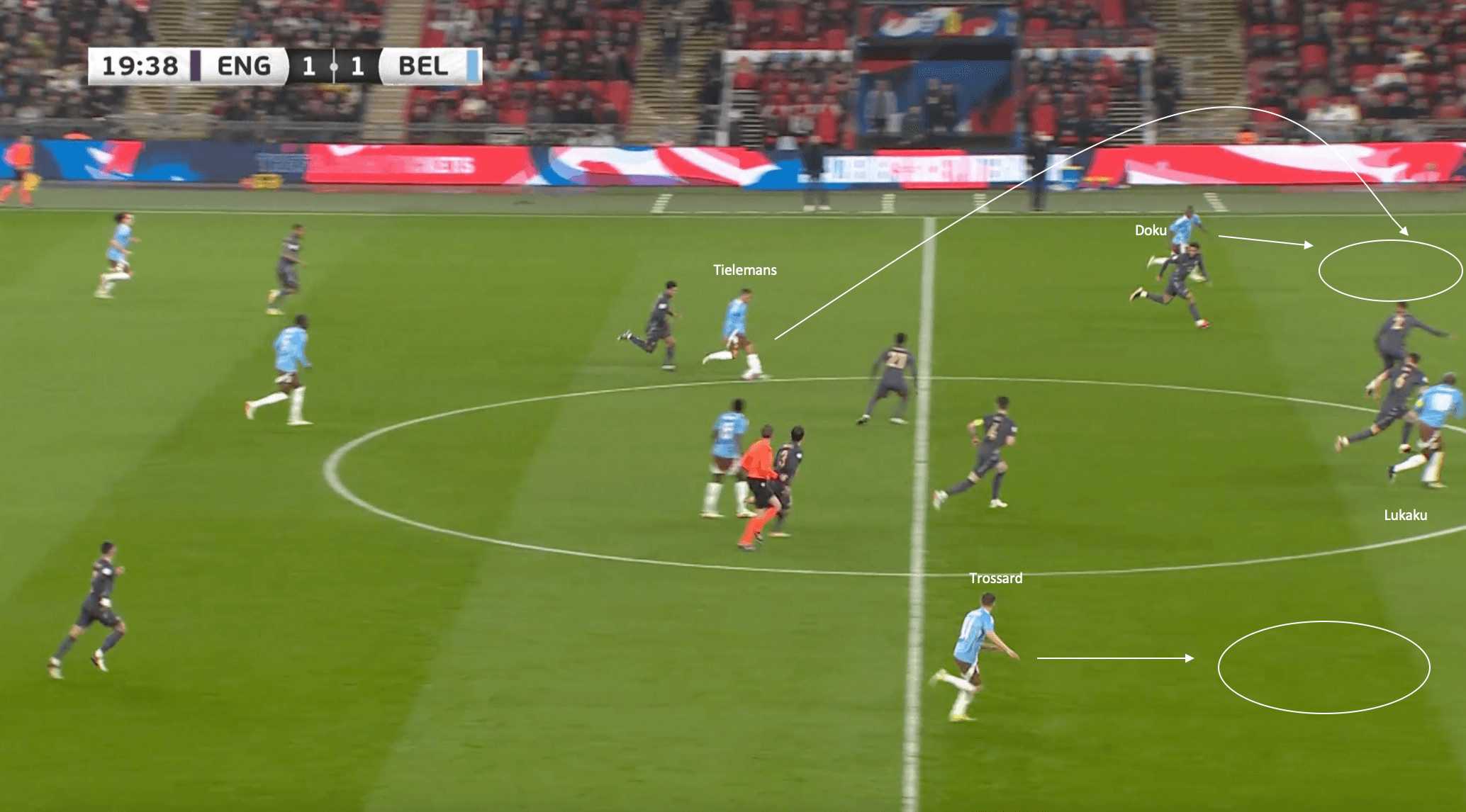
The image above from Belgium’s recent friendly against England shows the threat Tedesco’s side can cause in transition.
In this phase of play, Tielemans is able to win a 50/50 duel in the midfield, allowing Belgium to regain possession and start a transitional moment.
Notice how the front three of Belgium are already advanced of the ball, with Doku and Trossard offering width in the wide areas, as well as space for them to run into and receive the ball in behind.
The positioning of the front three forces England’s defence to turn and drop off towards their own goal.
With both Doku and Trossard unmarked in the wide channels and able to receive possession, this gives Tielemans multiple options in which to play towards.
He chooses to play the ball into the path of Doku, with the winger already having the advantage against the full-back.
Doku is able to receive possession and drive into the penalty area 1v1 against the full-back, getting the shot off and forcing the goalkeeper into a save.
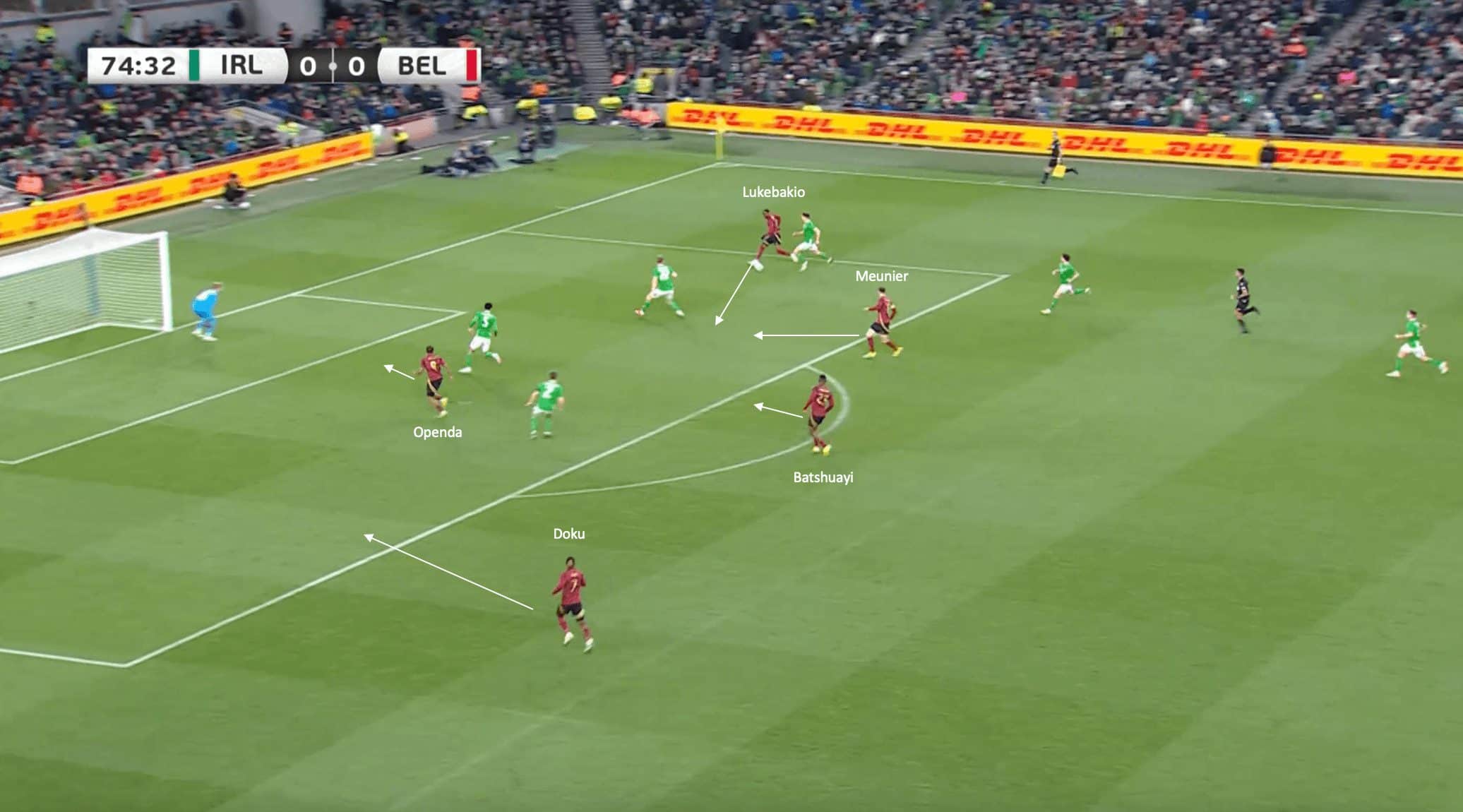
The image above again shows the danger that Belgium possess when they can attack in transition.
In this transitional phase, the ball is in possession of Dodi Lukebakio in the wide channel, with right-back Thomas Meunier making an underlapping run into the penalty area.
Earlier in this analysis, we mentioned how well Belgium have been with making sure they have layers to their runs into the penalty area, and this is displayed once again when they are attacking in transitional moments.
There were plenty of layers to the runs by the Belgian attackers, with Lukebakio playing a cut back pass into Meunier’s path, with the full-back’s shot saved by the Republic of Ireland goalkeeper.
This example is also able to show the numbers Belgium have been able to get forward in attack consistently in transition, with Tedesco’s side outnumbering the Ireland defence 5v4 just outside the penalty area.
In transition, Belgium will be able to consistently cause a threat, due to the pace they possess in the wide areas, as well as the work rates of the attacking and midfield players to quickly get forward into the final third of the pitch.
Forwards
Now, let us look at each area of the Belgium squad and analyse them in more detail.
First, we will look at the forwards that Tedesco will likely bring to Germany for the Euros this summer.
In the central striker position, Tedesco is bringing plenty of goals to Germany, with Romelu Lukaku and Loïs Openda in excellent goalscoring form at club level this season.
Lukaku has managed 19 goals in all competitions for AS Roma this season, with the 31-year-old averaging 1.91 shots per 90 minutes this season and putting over 42% of his shots on target.
Switching focus to Openda, and the RB Leipzig striker has scored 28 goals in all competitions for the Bundesliga side, with Tedesco potentially having a tough decision to make on who starts up top in the first group stage match.
Openda has also managed 3.37 shots per 90 minutes while putting 52.4% of his shots in the Bundesliga this season on target.
In the wide areas, Tedesco is spoilt for choice.
Based on current form and who Tedesco has picked recently, it would be unsurprising to see Jérémy Doku and Leandro Trossard start for Belgium this summer.
PSV’s Johan Bakayoko also has a legitimate case to start, with the winger in fine form for the Eredivisie champions this season.
These three, as well as the rest of the wingers for Belgium, will look to frequently cross and take on opposition full-backs with their dribbling ability.
Doku has proven himself to be one of the best dribblers in the Premier League at the age of 21, with the winger averaging 14.32 dribbles per 90 minutes with a 62% success rate.
Doku also averages just under five crosses per 90 minutes in the Premier League this season.
Trossard has averaged 3.23 dribbles per 90 minutes with a success rate of 61% while also averaging over two crosses per 90 minutes.
Bakayoko has averaged 9.54 dribbles per 90 minutes with a 60.5% success rate for PSV, while also averaging 4.29 crosses per 90 minutes.
Midfielders
When looking at the midfield group for Belgium, one of their critical stats is ball progression, especially progressive passes and passes inside the final third of the pitch.
Kevin De Bruyne has been an elite ball progressor for most of his senior career, and he will be one of the key players for Tedesco at this summer’s tournament.
The 32-year-old has made 24 key passes in the Premier League this season while averaging 7.62 progressive passes this season and 5.71 to the final third per 90 minutes.
The Belgium captain will be key to progressing the ball through the midfield for Tedesco’s side.
When looking at the other two potential starting midfielders for Belgium this summer, Amadou Onana has also been a very good ball distributor for Everton this season.
The 22-year-old has averaged 6.39 progressive passes per 90 minutes this season while also averaging 5.95 passes to the final third in the Premier League this campaign.
The third midfield position could have some debate for Tedesco, but we have predicted that Lyon midfielder Orel Mangala will take the third starting spot in midfield.
While the 26-year-old has not played many progressive passes or passes to the final third for Lyon this season since joining in January, he has begun to get more accustomed to life in Ligue 1, with Mangala starting in Belgium’s last pre-Euros warm-up match against England.
Defenders
Of course, the most critical thing for the Belgium defenders at this tournament will be to keep up their defensive solidity and keep the ball out of the back of the net.
Defensive duels and aerial duels for both the full-backs and centre-backs will be crucial for Belgium’s success at this tournament.
Starting with Arthur Theate, the 23-year-old Rennes defender has won 62.5% of his aerial duels this season while also winning over 68% of his defensive duels.
On the right side, Timothy Castagne has also been a good defender this season.
The Fulham defender has been successful in 59.3% of his defensive duels, while also being successful in 54.3% of his aerial duels.
Moving centrally, we will start by looking at Anderlecht central defender Jan Vertonghen, with the 37-year-old centre-back still being a key part of Domenico Tedesco’s plans as he enters his likely final international tournament.
Vertonghen has won 63% of his defensive duels this season for the Belgian Pro League leaders, while also winning just under 62% of his aerial duels.
Starting next to Vertonghen will likely be Wout Faes, with the Leicester City defender being a key player in Enzo Maresca’s Championship winning side.
The 26-year-old centre-back won 68% of his defensive duels for Leicester City this season, though he only won 47.8% of his aerial duels, which could be a slight concern for Tedesco.
Key player
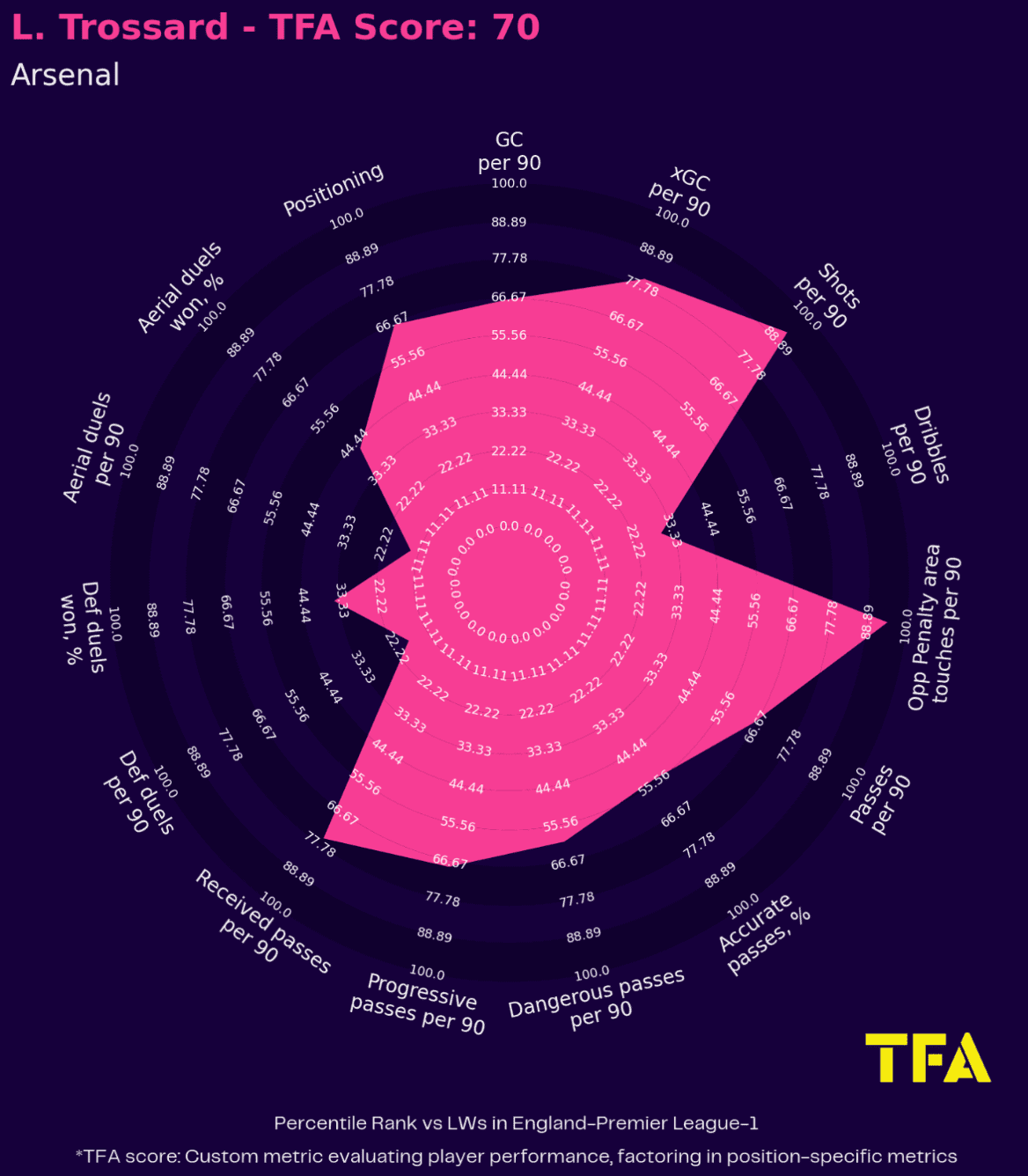
When it comes to picking a key player for Belgium at this European Championships, it is hard to look past the obvious choice, Kevin De Bruyne.
However, another Belgian international who has had a very good season is Leandro Trossard, with the Arsenal winger having scored 16 goals in all competitions for Mikel Arteta’s side this season.
As we can see, Trossard has been very impactful inside and around the penalty area this season, as we can see from the radar graphic above.
He ranks near the top percentile in opposition penalty area touches per 90 minutes, as well as above the 90th percentile in shots per 90 minutes.
He does not rank highly in dribbles per 90 minutes or aerial or defensive duels, with most of Trossard’s impact happening on the attacking side.
The 29-year-old winger also ranks at about the 80th percentile in expected goal contributions per 90 minutes, highlighting the impact he has had creating chances for Arsenal this season, especially with the Belgian winger not starting every match for Arteta’s side this season.
Though he has not been a consistent starter for Arsenal throughout the entire 2023/24 season, Tedesco will likely turn to Trossard in one of the starting wide positions, with Belgium hoping he will have a massive impact this summer.
Tournament prediction
When the draw was made for Euro 2024, Belgium were placed in Group E, along with Ukraine, Romania, and Slovakia.
Even though Belgium had a very disappointing World Cup, where they were knocked out at the group stage, we do predict that they will be strong enough to top their group and make it back to the knockout stages of a major international tournament.

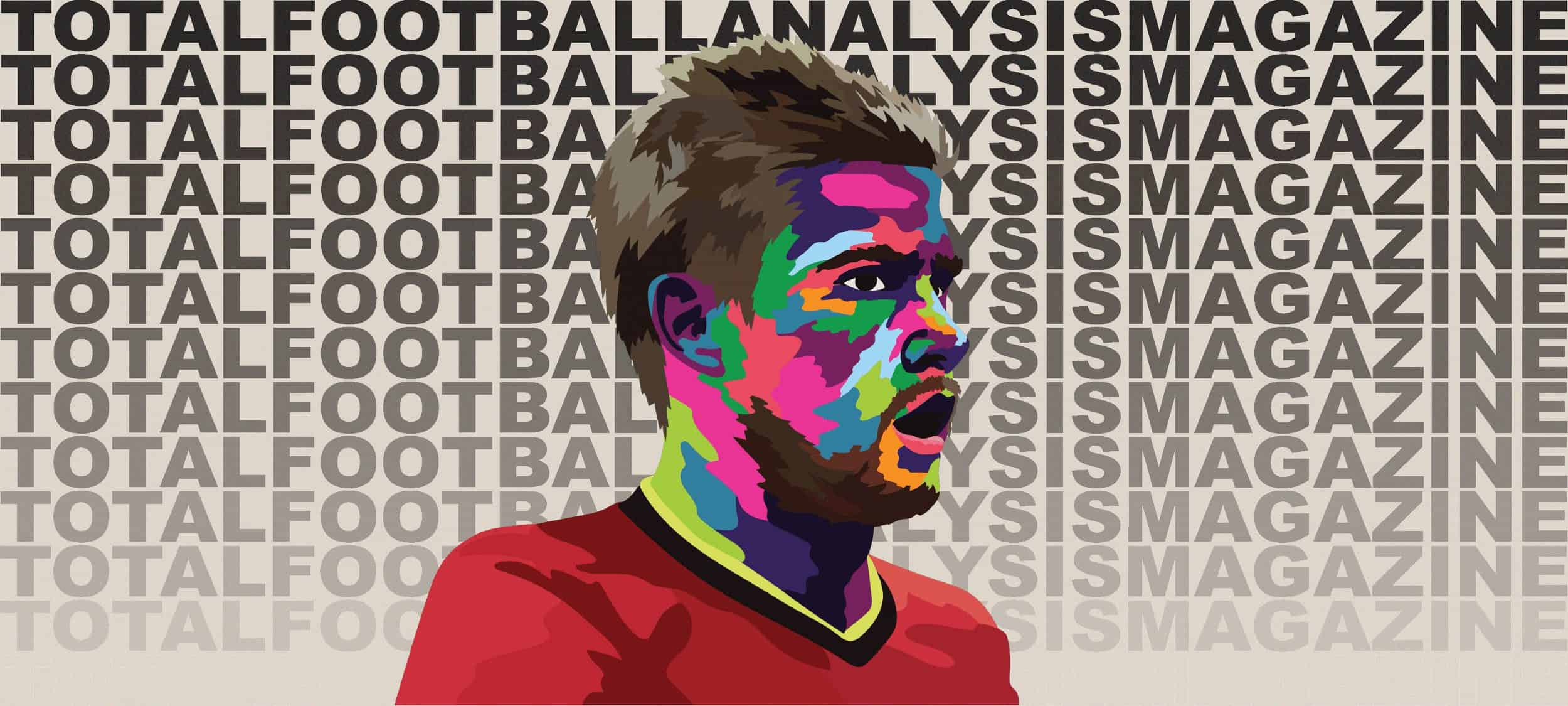



Comments